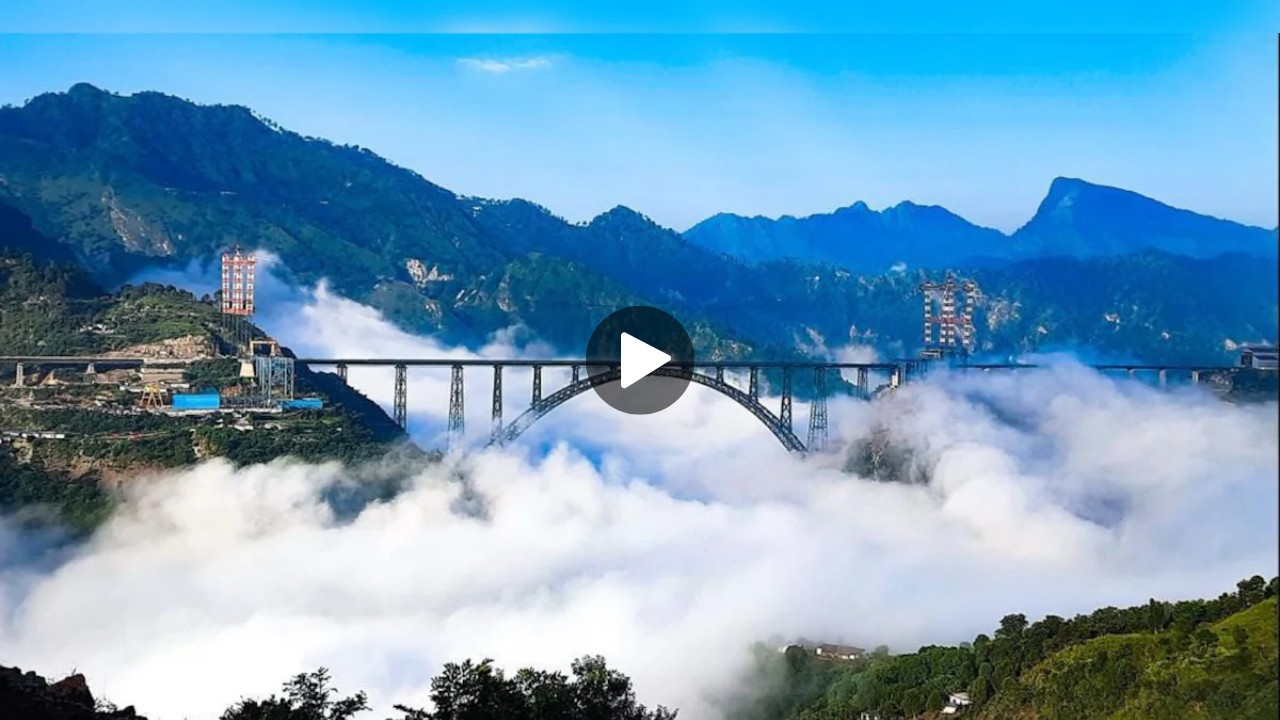World Highest Railway Bridge: India has added another jewel to its crown of infrastructure development with the completion and inauguration of the Chenab Rail Bridge, the world’s highest railway bridge. This awe-inspiring structure, built across the Chenab River in Jammu & Kashmir, is a symbol of modern engineering, national integration, and strategic connectivity.
Location & Strategic Importance
The Chenab Rail Bridge is located between Bakkal and Kauri in the Reasi district of Jammu and Kashmir. It connects the Udhampur-Srinagar-Baramulla Rail Link (USBRL) project, an ambitious effort by Indian Railways to integrate the Kashmir Valley with the rest of India through an all-weather railway network.
This bridge is not just a feat of architecture but also holds immense strategic value, allowing the Indian Army and civilians to move swiftly through the region. It plays a crucial role in national security, tourism, economic development, and regional stability.
World Record-Breaking Dimensions
The Chenab Rail Bridge is officially the highest railway bridge in the world, surpassing even the Eiffel Tower in height. Here are some jaw-dropping numbers:
| Feature | Detail |
|---|---|
| Height (above river bed) | 359 meters |
| Taller than Eiffel Tower? | Yes, by 35 meters |
| Total Bridge Length | 1,315 meters |
| Arch Span | 467 meters |
| Completion Year | 2024–2025 |
| Cost of Construction | Approx ₹1,486 crore |
Vande Bharat Express on the Chenab Bridge
On June 6, 2025, Prime Minister Narendra Modi inaugurated the bridge, and soon after, the Vande Bharat Express began crossing it—making it the first passenger train to run over the world’s highest rail bridge.
The Mini Vande Bharat Express between Katra and Srinagar uses this route, bringing high-speed rail comfort and convenience to the picturesque valleys of Kashmir. This development drastically reduces the travel time and offers a luxurious ride with modern amenities like:
- Heated windshields
- Thermal insulation for harsh winters
- Onboard Wi-Fi and infotainment
- Kavach safety system
Engineering Marvel Built in Tough Terrain
Building a bridge of this magnitude in the Himalayan region was no easy feat. The terrain was extremely rugged, prone to landslides, seismic activity, and extreme weather conditions. Yet, Indian engineers rose to the challenge:
- 1,300+ engineers and thousands of laborers worked round the clock
- Over 28,000 tonnes of steel were used
- Special corrosion-resistant steel was used to handle extreme temperature variations
- Designed to withstand wind speeds of up to 260 km/h
- Built to resist high-magnitude earthquakes
This project was delayed several times due to terrain and security issues, but the final result is a tribute to the Make in India spirit.
| Info In Gujarati | View |
Conclusion: A New Era for Kashmir’s Connectivity
The world’s highest railway bridge is more than just steel and concrete—it’s a powerful symbol of unity, resilience, and progress. It connects people, boosts the economy, and enhances national integration.
With projects like the Chenab Bridge and the USBRL rail line, India is not just laying tracks on the ground—it’s paving the way for a stronger, more connected future.
